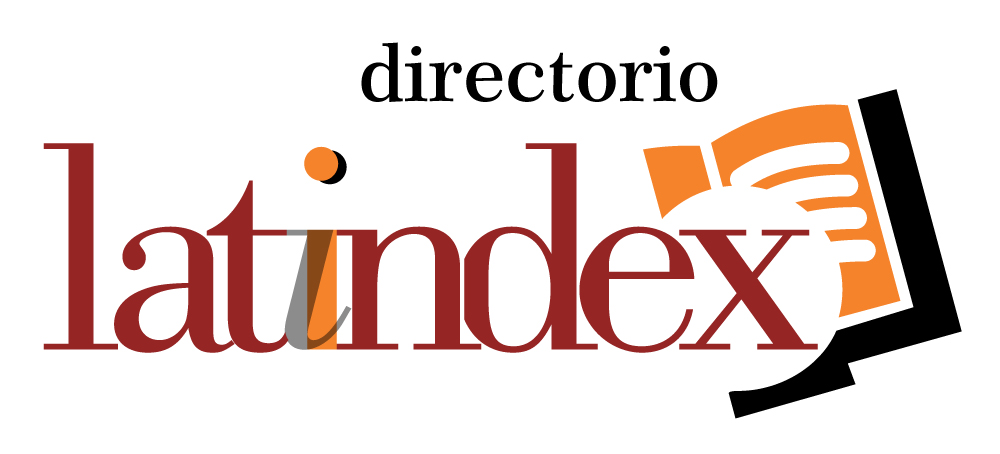The TP53 somatic variant in Latin America: prevalence, functional implications, and clinical challenges in oncology
DOI:
https://doi.org/10.71112/06eh8813Keywords:
TP53, p.R175H, cancer, missense, DNAAbstract
Background: The TP53 gene plays a central role as a tumor suppressor, maintaining genomic integrity through cell cycle regulation, apoptosis, and DNA repair. Among its somatic mutations, the p.R175H variant is one of the most frequent and functionally disruptive hotspots, associated with loss of function, oncogenic gain of function, and resistance to therapy. This study aims to describe the frequency, geographic distribution, and cancer types associated with the TP53 p.R175H mutation in Latin American populations, as well as its functional impact and clinical relevance.
Methods: Through a systematic literature review and the functional analysis of a real case processed with a regional bioinformatic pipeline, we explore its implications as a prognostic biomarker and potential therapeutic target.
Results: The findings show a high prevalence of this variant across various cancer types in Latin America, particularly in breast, gastric, lung, and colon tumors, with notable heterogeneity among countries.
Conclusion: The TP53 p.R175H mutation is a priority biomarker in Latin American oncology, and its inclusion in molecular panels is key to advancing more effective and equitable precision medicine strategies.
Downloads
References
Arrieta, O., Cardona, A. F., Martín, C., Más-López, L., Corrales, L., Bramuglia, G., ... & Wills, B. (2019). Updated frequency of EGFR and KRAS mutations in non-small cell lung cancer in Latin America. Cancer Epidemiology, 63, 101618. https://doi.org/10.1016/j.canep.2019.101618 DOI: https://doi.org/10.1016/j.canep.2019.101618
BIREME. (2024). Biblioteca Virtual en Salud – BVS. https://bvsalud.org/es/
Bouaoun, L., Sonkin, D., Ardin, M., Hollstein, M., Byrnes, G., Zavadil, J., & Olivier, M. (2016). TP53 variations in human cancers: New lessons from the IARC TP53 database and genomics data. Human Mutation, 37(9), 865–876. https://doi.org/10.1002/humu.23035 DOI: https://doi.org/10.1002/humu.23035
Brosh, R., & Rotter, V. (2009). When mutants gain new powers: News from the mutant p53 field. Nature Reviews Cancer, 9(10), 701–713. https://doi.org/10.1038/nrc2693 DOI: https://doi.org/10.1038/nrc2693
Bykov, V. J. N., Eriksson, S. E., Bianchi, J., & Wiman, K. G. (2018). Targeting mutant p53 for efficient cancer therapy. Nature Reviews Cancer, 18(2), 89–102. https://doi.org/10.1038/nrc.2017.109 DOI: https://doi.org/10.1038/nrc.2017.109
Cho, Y., Gorina, S., Jeffrey, P. D., & Pavletich, N. P. (1994). Crystal structure of a p53 tumor suppressor-DNA complex: Understanding tumorigenic mutations. Science, 265(5170), 346–355. https://doi.org/10.1126/science.8023157 DOI: https://doi.org/10.1126/science.8023157
COSMIC. (2025). Catalogue of somatic mutations in cancer. https://cancer.sanger.ac.uk/cosmic
Duffy, M. J., Synnott, N. C., & Crown, J. (2018). Mutant p53 in breast cancer: Potential as a therapeutic target and biomarker. Breast Cancer Research and Treatment, 170(2), 213–219. https://doi.org/10.1007/s10549-018-4753-7 DOI: https://doi.org/10.1007/s10549-018-4753-7
Freed-Pastor, W. A., & Prives, C. (2012). Mutant p53: One name, many proteins. Genes & Development, 26(12), 1268–1286. https://doi.org/10.1101/gad.190678.112 DOI: https://doi.org/10.1101/gad.190678.112
Graziano, F., Fischer, N. W., Bagaloni, I., Di Bartolomeo, M., Lonardi, S., Vincenzi, B., Perrone, G., Fornaro, L., Ongaro, E., Aprile, G., Bisonni, R., Prisciandaro, M., Malkin, D., Gariépy, J., Fassan, M., Loupakis, F., Sarti, D., Del Prete, M., Catalano, V., ... Ruzzo, A. (2020). TP53 mutation analysis in gastric cancer and clinical outcomes of patients with metastatic disease treated with ramucirumab/paclitaxel or standard chemotherapy. Cancers (Basel), 12(8), 2049. https://doi.org/10.3390/cancers12082049 DOI: https://doi.org/10.3390/cancers12082049
IARC TP53 Database. (2024). https://p53.iarc.fr
Joerger, A. C., & Fersht, A. R. (2008). Structural biology of the tumor suppressor p53 and cancer-associated mutants. Advances in Cancer Research, 97, 1–23. https://doi.org/10.1016/S0065-230X(06)97001-5 DOI: https://doi.org/10.1016/S0065-230X(06)97001-8
Kandoth, C., McLellan, M. D., Vandin, F., Ye, K., Niu, B., Lu, C., ... & Ding, L. (2013). Mutational landscape and significance across 12 major cancer types. Nature, 502(7471), 333–339. https://doi.org/10.1038/nature12634 DOI: https://doi.org/10.1038/nature12634
Levine, A. J. (2020). p53: 800 million years of evolution and 40 years of discovery. Nature Reviews Cancer, 20(8), 471–480. https://doi.org/10.1038/s41568-020-0262-1 DOI: https://doi.org/10.1038/s41568-020-0262-1
Monti, P., Menichini, P., Speciale, A., Cutrona, G., Fais, F., Taiana, E., Neri, A., Bomben, R., Gentile, M., Gattei, V., Ferrarini, M., Morabito, F., & Fronza, G. (2020). Heterogeneity of TP53 mutations and p53 protein residual function in cancer: Does it matter? Frontiers in Oncology, 10, 593383. https://doi.org/10.3389/fonc.2020.593383 DOI: https://doi.org/10.3389/fonc.2020.593383
Muller, P. A. J., & Vousden, K. H. (2014). Mutant p53 in cancer: New functions and therapeutic opportunities. Cancer Cell, 25(3), 304–317. https://doi.org/10.1016/j.ccr.2014.01.021 DOI: https://doi.org/10.1016/j.ccr.2014.01.021
Olive, K. P., Tuveson, D. A., Ruhe, Z. C., Yin, B., Willis, N. A., Bronson, R. T., ... & Jacks, T. (2004). Mutant p53 gain of function in two mouse models of Li-Fraumeni syndrome. Cell, 119(6), 847–860. https://doi.org/10.1016/j.cell.2004.11.004 DOI: https://doi.org/10.1016/j.cell.2004.11.004
Olivier, M., Hollstein, M., & Hainaut, P. (2010). TP53 mutations in human cancers: Origins, consequences, and clinical use. Cold Spring Harbor Perspectives in Biology, 2(1), a001008. https://doi.org/10.1101/cshperspect.a001008 DOI: https://doi.org/10.1101/cshperspect.a001008
Organización Mundial de la Salud. (2024). EVIPNet - Red para la evidencia y la acción en políticas de salud. https://www.who.int/initiatives/evidence-informed-policy-network
Page, M. J., McKenzie, J. E., Bossuyt, P. M., Boutron, I., Hoffmann, T. C., Mulrow, C. D., ... & Moher, D. (2021). The PRISMA 2020 statement: An updated guideline for reporting systematic reviews. BMJ, 372, n71. https://doi.org/10.1136/bmj.n71 DOI: https://doi.org/10.1136/bmj.n71
Palacio-Rúa, K. A., Isaza-Jiménez, L. F., Ahumada-Rodríguez, E., Ceballos-García, H., & Muñetón-Peña, C. M. (2014). Genetic analysis in APC, KRAS, and TP53 in patients with stomach and colon cancer. Revista de Gastroenterología de México, 79(4), 275–284. https://doi.org/10.1016/j.rgmx.2014.05.001 DOI: https://doi.org/10.1016/j.rgmxen.2014.06.006
Rivera Franco, M. M., León-Rodríguez, E., & Meneses-García, A. (2021). Molecular cancer epidemiology in Latin America: Challenges and opportunities. The Lancet Oncology, 22(5), e203–e213. https://doi.org/10.1016/S1470-2045(21)00041-8
Sabapathy, K., & Lane, D. P. (2018). Therapeutic targeting of p53: All mutants are equal, but some are more equal than others. Nature Reviews Clinical Oncology, 15(1), 13–30. https://doi.org/10.1038/nrclinonc.2017.151 DOI: https://doi.org/10.1038/nrclinonc.2017.151
Vousden, K. H., & Lane, D. P. (2007). p53 in health and disease. Nature Reviews Molecular Cell Biology, 8(4), 275–283. https://doi.org/10.1038/nrm2147 DOI: https://doi.org/10.1038/nrm2147
Wang, W., & Sun, Y. (2010). Targeting p53 for cancer therapy: Strategies, challenges, and opportunities. Current Drug Targets, 11(5), 573–581. https://doi.org/10.2174/138945010791011938 DOI: https://doi.org/10.2174/138945010791011938
Zabaleta, J., Pérez, F. L., & Andrade, C. M. (2022). Epidemiología molecular del cáncer gástrico en América Latina: Análisis desde una perspectiva regional. Revista Panamericana de Salud Pública, 46, e125. https://doi.org/10.26633/RPSP.2022.125 DOI: https://doi.org/10.26633/RPSP.2022.125
Downloads
Published
Issue
Section
License
Copyright (c) 2025 Multidisciplinary Journal Epistemology of the Sciences

This work is licensed under a Creative Commons Attribution 4.0 International License.











